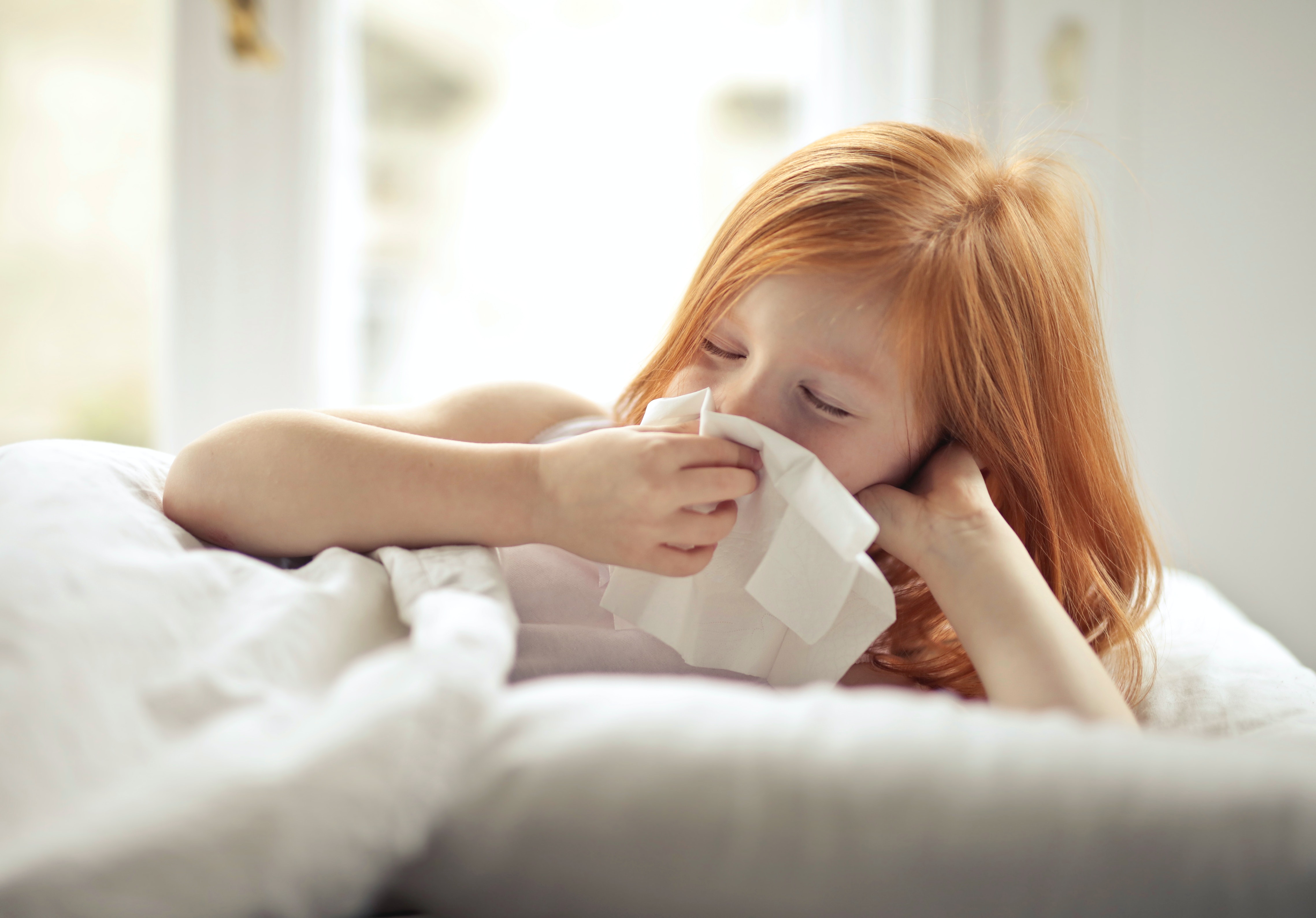
Autumn is the flu season and children are more vulnerable to the flu virus. Dr Cai from the children’s clinic at Columbia China discusses influenza in children.
Influenza in children can be accompanied by persistent high fever, headache, muscle pain, lethargy.
When children get the common cold, usually the fever is not high, frequent or prolonged. However, the condition can change, and parents should not take it lightly.
In addition, influenza virus infection may activate an allergic reaction, prolonging the fever period, exacerbating cough and phlegm symptoms, and some may develop hyperthermia, which can cause febrile convulsion (convulsions triggered by fever).
Firstly, the doctor needs to know the whereabouts of the child 2-3 days before the illness onset, because the incubation period of influenza virus is 1-7 days, with the most common being two days. Then the doctor will ask the child about his or her symptoms in detail, about allergies, and about medicine used. After a whole body check, the doctor will choose necessary lab tests to confirm the diagnosis.
As for treatment, oseltamivir is the most commonly used medication for influenza in children in China. Some antipyretics (fever reducers) and anti-allergy drugs are also used if necessary. As for the common cold, we generally promote self-curing by drinking more water and getting more rest.

The flu virus is mainly transmitted by droplets and contact. Prevent infection by,
• social distancing
• wearing masks
•frequent hand washing
•getting flu shots
• improving children’s immunity
The development of children’s immune function is a step-by-step process. The best way to boost immunity is to promote healthy development.
i. Increase the intake of multiple nutrients. Children’s daily nutritional requirements are 40-50% carbohydrates, 30-40% fats, 10-20% proteins, and the rest vitamins and micronutrients.
ii. Get physical activity. Physical activity can increase children’s coordination, strength, brain cognition and other aspects of development. Apart from that, it can also protect eyesight, promote intestinal motility, and improve digestive function, thereby increasing appetite.
It is necessary. Since autumn and winter is the flu season, it is best to get vaccinated in September and October, it takes 14 days for the vaccine to fully activate. The strongest protection period is six months to 10 months. The flu vaccine is divided into two types: those over three years old and those under three. Those over 3 years old only need one dose of vaccine a year. While those under 3 years old (6 months old ~ 3 years old) need to be vaccinated twice with a gap of one month.
A body temperature more than 38.5 degrees is likely to cause convulsions, manifested as systemic or local, along with crossed eyes horizontally or vertically, and loss of consciousness. Various methods including antipyretic agents and physical cooling should be used at home immediately. Closely watch over the child to avoid secondary damage. Febrile convulsion mostly lasts seconds to minutes, then will stop by itself. Babies should be sent to the ER for help after seizures.
Dr Yubo Cai, Paediatrician
Dr Cai has more than 15 years of paediatric treatment experience.
Columbia Kaiyi Clinic
Website: columbia-clinic.com
Flu Vaccine Registration: 6327 5599